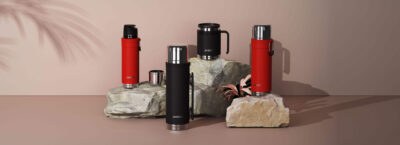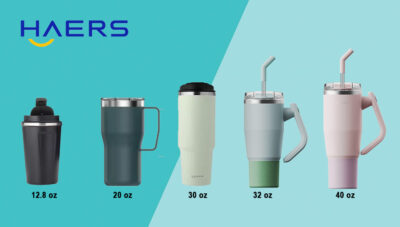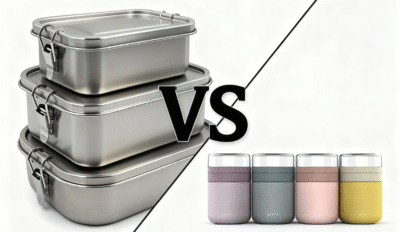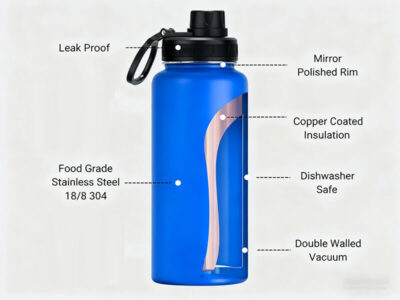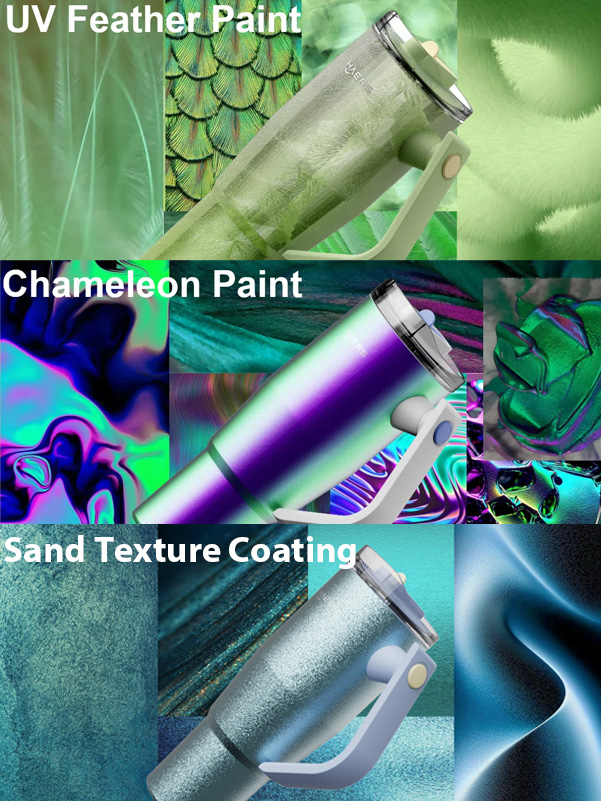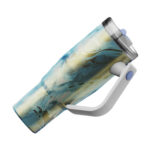Can I paint on stainless steel water bottles?
Have you ever thought about taking your favorite Stanley or YETI tumbler and turning it into your own customized bottle? Maybe you’ve imagined doodling on it with vibrant colors or creating a personalized design that no one else has. It sounds fun, right? But then you look at the sleek, shiny surface of your stainless steel cup and wonder—what kind of paint will actually stick to this thing and last longer than just a few washes?
That’s where the tricky part comes in. Stainless steel water bottles are made to be durable, scratch-resistant, and sleek, which also means not every paint or pen will work on them. A lot of DIY projects start off exciting, but without the right materials, the artwork may fade, peel, or chip away after a short time.
As someone who has been designing and manufacturing stainless steel water bottles for over 20 years, I’ve seen both sides—the fun of DIY customization at home and the precision of professional factory finishes.
Let’s dive in and find out how you can give your stainless steel water bottle a fresh, creative twist—without wasting effort on paints that won’t last.
Table of Contents
ToggleHome DIY Painting Methods for Stainless Steel Bottles
If you’re ready to grab your cup and some brushes, the good news is—you can paint stainless steel water bottles at home. The key is knowing which tools and paints actually work on this slippery surface. Here’s a step-by-step guide to make your DIY project both fun and long-lasting.
2.1 Preparation Before DIY Painting
Like any good project, preparation makes all the difference. Stainless steel is naturally smooth and resistant to coatings, so a little surface prep will help your paint stick better.
- Clean & degrease: Wash your bottle with warm soapy water and dry it thoroughly. For stubborn oils, use rubbing alcohol to wipe the surface.
- Light sanding: Gently rub the area with fine-grit sandpaper (around 400–600 grit). This roughens up the surface just enough for paint to grip.
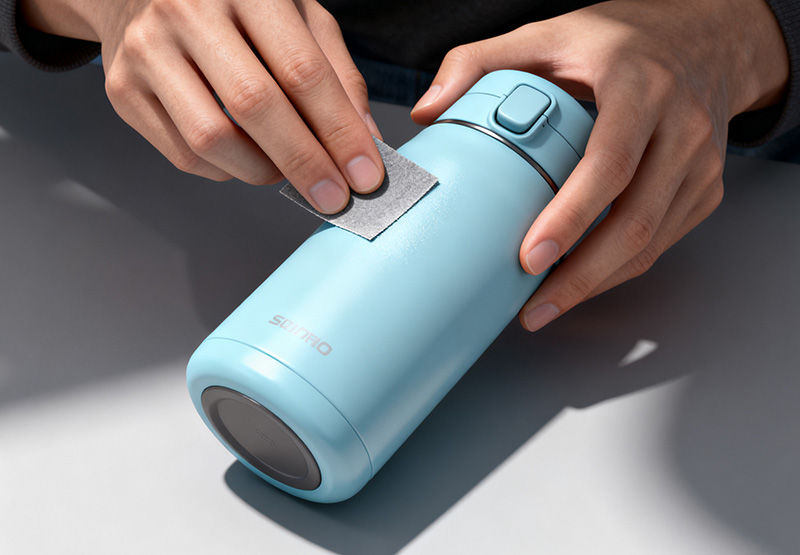
2.2 Common DIY Painting Tools & Paints
Once your bottle is ready, you’ll need the right paints. Not all markers or sprays will hold up, so here are some safe bets for home use:
- Acrylic paint & markers – Widely available, easy to apply, and perfect for detailed designs or colorful artwork.
- Oil-based paint pens – More durable than standard markers, great for writing names or adding bold outlines.
- Spray paints – Ideal if you want to cover larger areas with even coats. Just be sure to spray outdoors or in a well-ventilated space.
- Epoxy or resin coating – This isn’t a paint itself, but a clear protective layer you can add afterward to lock in your design.
2.3 Finishing & Sealing
To make your DIY masterpiece last, sealing is essential.
- Clear coat or varnish: A transparent spray or brush-on sealant will protect your artwork from scratches and fading.
- Extra durability tip: Apply multiple thin coats of sealant instead of one thick coat—this helps prevent peeling.
DIY painting is perfect if you want to create a personalized gift, a one-of-a-kind keepsake, or simply add some fun to your daily tumbler. Just remember: while these methods are great for home use, they won’t match the durability of professional factory finishes.
Factory Surface Finishes on Stainless Steel Bottles and Their Compatibility with DIY Painting
When you pick up a stainless steel water bottle from brands like Stanley, YETI, or even custom promotional drinkware, you’ll notice that not all surfaces feel the same. Some bottles have a smooth glossy look, others a matte powder-coated finish, while some come with brushed steel or even shiny mirror polish. These finishes are not just about looks—they determine how well your paint or marker will stick.
Powder coating is one of the most common finishes in the industry. It gives the bottle a matte or semi-matte look and creates a slightly textured surface. From a DIY perspective, this is the friendliest canvas you could hope for. Acrylic paints, oil-based markers, and even spray paints tend to adhere much better to powder-coated bottles than to bare stainless steel. With a proper clear coat, your artwork can stay vibrant for months.
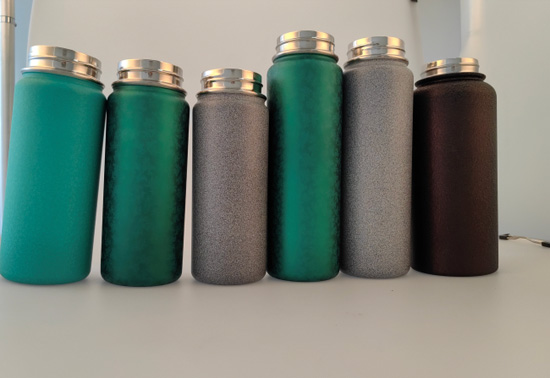
Factory-grade spray painting is another widely used finish. Unlike your DIY spray can at home, industrial spraying involves high-temperature curing, which makes the surface far more durable. The result is a smooth, even coating that can also accept additional decoration. If you try painting over it at home, acrylics and oil-based pens usually hold up, though you’ll still need a sealant to keep them from scratching off.

On the other hand, bottles with a polished or mirror finish are the most challenging for DIY painting. Their glossy surface is resistant to adhesion, and most paints will simply slide off or peel quickly. Brushed stainless steel, however, offers a bit more grip. Its subtle texture gives paints a chance to cling, though again, sealing is absolutely necessary. But brushing them is not a good idea.
Electroplated finishes, often seen on shiny or metallic-colored bottles, look impressive but don’t play well with DIY projects. The coating is smooth and chemically bonded, which makes it resistant to home-grade paints. Attempting to paint on these surfaces often results in flaking or uneven coverage.
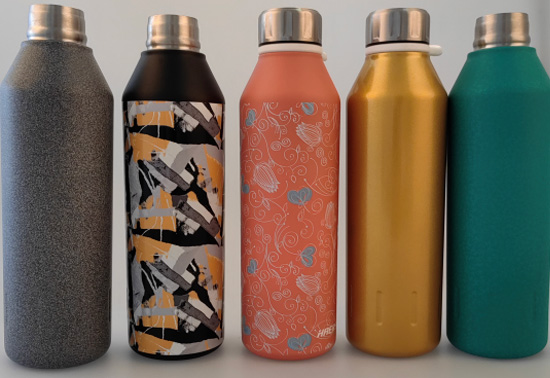
In short, the type of surface your bottle has will largely decide how successful your DIY artwork can be. Powder-coated or brushed finishes give you the best shot at long-lasting designs, while highly polished or electroplated bottles will challenge even the most patient artist.
Best Practices for Home DIY Painting
After understanding how different factory finishes affect the outcome, let’s circle back to what really matters if you’re trying to personalize a stainless steel water bottle at home. The truth is, not every surface will respond the same way, but with the right preparation and technique, you can still achieve a design that lasts.
The first golden rule is preparation. A clean, grease-free surface gives your paint the best chance to bond. Wiping the bottle with alcohol after washing helps remove invisible oils, while a little sanding on smooth areas makes a big difference in adhesion. Skipping this step is the fastest way to see your artwork peel away.
When it comes to choosing paints, acrylics are the easiest and most forgiving for beginners. They come in a wide range of colors, dry quickly, and are safe to use at home. Oil-based paint pens are another excellent option if you prefer crisp lines, lettering, or detailed illustrations. For those who like bold coverage, spray paint can work wonders, but make sure to apply it in thin, even coats and allow enough drying time between layers.
Sealing your artwork is where most DIY projects succeed or fail. Even the most carefully painted bottle will lose its charm without a protective finish. A clear varnish or top coat locks in the colors and provides resistance against scratches and daily handling. The trick is to apply several light coats instead of one heavy layer—patience here pays off in durability.
From our experience, the best results usually come from combining acrylic or oil-based paints with a powder-coated or brushed bottle surface, finished off with a reliable clear coat. This combination strikes the right balance between creativity, practicality, and durability, making it ideal for personal gifts or one-of-a-kind keepsakes.
DIY painting may not match the professional polish of a factory process, but with these practices, you can still create something that feels personal, meaningful, and sturdy enough to last through everyday use.
Printing and Painting Methods for Mass Production
While painting a single bottle at home can be a fun weekend project, the story changes completely when you need bulk customized bottles for retail, corporate gifts, or promotional campaigns. In these cases, consistency, durability, and safety standards matter just as much as creativity. That’s where factory-level printing and painting techniques come in.
One of the most common options is screen printing or pad printing, both widely used for applying logos and simple designs. These methods allow brands to put their identity front and center on a stainless steel surface, with results that are sharp, repeatable, and cost-effective for bulk orders.
For more complex or colorful graphics, heat transfer printing and hydrographic printing offer full-coverage decoration. These methods can wrap a bottle in patterns, gradients, or photo-quality images—something that home DIY painting simply can’t achieve with the same precision.
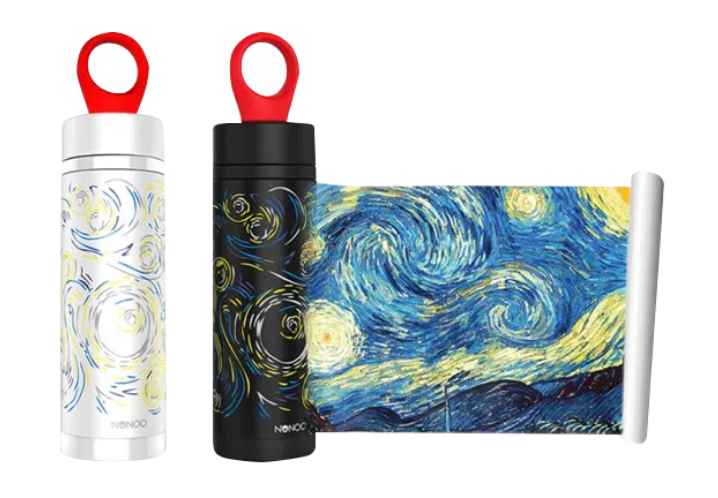
Another popular option for premium branding is laser engraving, sometimes paired with paint filling. Laser etching cuts into the surface of the stainless steel, creating a permanent mark that won’t fade over time. By adding a layer of color into the engraved areas, brands can combine durability with striking visual impact.
When it comes to overall surface finishes, factories also rely on industrial spray painting and powder coating. These processes are carried out in controlled environments, often with high-temperature curing, which results in coatings that are far more resilient than anything achievable at home. Importantly, the paints and coatings used at an industrial level are carefully selected to be food-safe and compliant with international export standards.
What all of this means is simple: if you need your bottles to look uniform, survive years of use, and meet safety regulations, factory processes are the only reliable choice. Home DIY painting is wonderful for one-of-a-kind creations, but when it comes to scaling up, professional manufacturing is what ensures both beauty and performance.
DIY vs. Factory – Which One Should You Choose?
At the end, both DIY painting and factory methods have their place—it just depends on what you want from your stainless steel water bottle.
DIY painting is all about personality. If you’re looking to create a one-off gift, add a personal touch to your daily tumbler, or simply enjoy the process of making something unique, then acrylic paints, oil-based markers, or spray paints at home can be a rewarding choice. You get full creative freedom, and every bottle turns out different—just like a piece of art.
Factory processes, on the other hand, are designed for consistency and durability. Screen printing, heat transfer, laser engraving, and powder coating deliver professional-grade results that stand up to daily use, dishwashing, and long-term handling. For retailers, gift companies, or brands, these techniques ensure every single unit looks exactly the same and meets strict quality and safety standards.
So, which one should you choose? For fun, self-expression, or personal gifts, DIY is the way to go. But if your goal is bulk customization, professional branding, or retail-quality durability, then factory methods are the smarter investment.
As a manufacturer with over 20 years of experience in stainless steel drinkware, Haers have worked with global retailers and brands to produce bottles that combine functionality with stunning surface finishes. Whether you’re looking for powder coating, heat transfer prints, or precision laser engraving, our team can deliver solutions tailored to your brand’s needs.
In short: DIY for fun, Factory for business. And if your business is ready for the next step, we’re here to help you create stainless steel water bottles that look as good as they perform.


